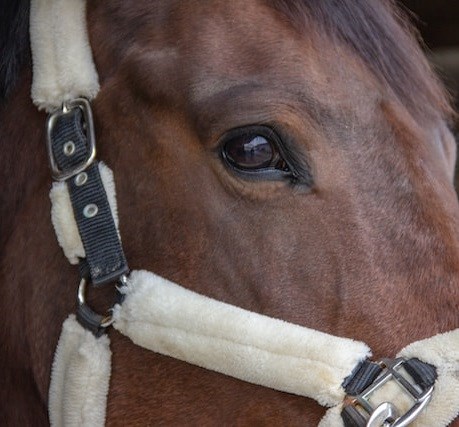Contact
Anneli Ryden
Lecturer at the Department of Clinical Sciences; Division of Veterinary Nursing
Telephone: 018-671890
E-mail: anneli.ryden@slu.se

Streptococcus equi subsp. equi (S. equi) is transmitted via contact with infected horses or fomites such as equipment or surfaces of the stable environment. Effective cleaning and sanitation is essential to minimize risk of fomite-associated infections. This study assessed the effectiveness of cleaning and sanitation of experimentally S. equi contaminated materials and equipment found in stables.
Wood, concrete, plastic, leather halters, leather gloves and polyester webbing halters were inoculated with a 24-hour culture S. equi laboratory strain. In addition, selected materials were inoculated with a clinical strain of S. equi. Three days post inoculation all materials were sampled for retention of viable S. equi and a subset of each material was cleaned and sanitized. After an additional 2 days all treated and untreated materials were sampled for continued retention of viable S. equi. Separate subsets of contaminated polyester halter material were washed at 40°C with or without drying at 70°C, or washed at 60°C.
After cleaning and sanitation, all samples except polyester halters were culture negative. Even before cleaning and sanitation leather appears to poorly support survival of S. equi. After washing at 40°C and tumble drying, 14 of 16 halters were culture positive, however culture negative when washed at 60°C. Routine cleaning and sanitation of fomites contaminated with S. equi was generally effective to eliminate viable bacteria. However, survival between materials and strains differed, with leather poorly permissive to S. equi survival even without cleaning, whereas polyester webbing halters retained viable S. equi even after washing at temperatures of 40°C.
https://doi.org/10.1016/j.jevs.2022.104204
Ryden A, Fernström L-L, Svonni E, Riihimäki M. Effectiveness of Cleaning and Sanitation of Stable Environment and Riding Equipment Following Contamination With Streptococcus equi Subsp. Equi (2022). J Equine Vet Sci. Dec 29;121:104204. doi: 10.1016/j.jevs.2022.104204
Anneli Ryden
Lecturer at the Department of Clinical Sciences; Division of Veterinary Nursing
Telephone: 018-671890
E-mail: anneli.ryden@slu.se